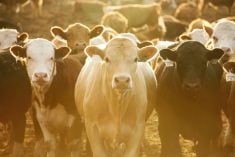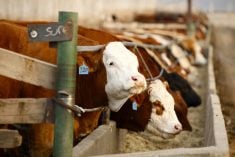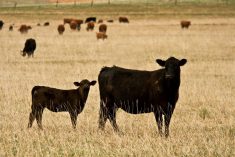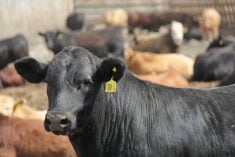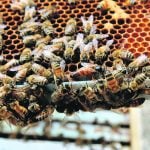Compared to last week, western Canadian feeder cattle prices were relatively unchanged. However, quality features played a larger role in the price structure. Buyers shied away on fleshier yearlings which is often the case when margins move into negative territory. It’s that time of year when thicker coats can be somewhat misleading and buyers pulled in the reins on the unknown.
In lighter weight categories, adverse weather contributed to larger discounts on unweaned or semi-weaned calves. Buyers incorporated sharper risk discounts; feedlot operators factored in higher costs per pound gain due to increased death loss. Secondly, if there are two or three sick ones in a bunch, buyers assumed there’ll be a few more. Winter-type conditions appeared to be a lead weight on the market, although moderate to strong demand was noted across the Prairies.
Read Also

U.S. grains: Soy futures post biggest monthly gain in nearly five years on China trade optimism
U.S. soybean futures climbed to a 15-month high and posted their biggest monthly gain in nearly five years on Friday following a rally fueled by the prospect of revived exports to China.
Eastern Saskatchewan was once again a hot pocket although the premium over Alberta markets eroded. Smaller groups of feather-light large-frame steers weighing just over 400 lbs. were trading from $270 to as high as $280. Medium- to larger-frame tan steer calves averaging 525 to 540 lbs. were trading from $245 to $252. A small group of larger-frame Charolais heifers averaging 520 lbs. were quoted at $209 in the same region.
Larger-frame fleshier Simmental-cross steers averaging around 820 lbs. were quoted at $203 in southern Alberta while 810-lb. fleshier red heifers sold for $193 in the same area. Yearling supplies are rather snug at this time of year but there is a fair amount of optimism for fed cattle prices in the March-April timeframe. Over the next couple of months, U.S. weekly beef production is expected to decline. At the same time, record-high consumer confidence is confirming that demand will continue to run three to five per cent above year-ago levels. Feedlot margins are expected to move into positive territory in the first quarter, which should spill over into the feeder complex.
— Jerry Klassen manages the Canadian office of Swiss-based grain trader GAP SA Grains and Produits Ltd. and is president and founder of Resilient Capital, specializing in proprietary commodity futures trading and market analysis. Jerry consults with feedlots on risk management and writes a weekly cattle market commentary. He can be reached at 204-504-8339.




